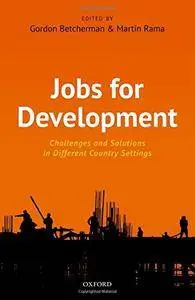Jobs For Development: Challenges and Solutions in Different Country Settings by Gordon Betcherman and Martin Rama
English | 2016 | ISBN: 0198754841 | 336 pages | PDF | 1,7 MB
English | 2016 | ISBN: 0198754841 | 336 pages | PDF | 1,7 MB
This book is a sequel to the World Bank's World Development Report 2013: Jobs. The central message of that report was that job creation is at the heart of development. Jobs raise living standards and lift people out of poverty, they contribute to gains in aggregate productivity, and they may even foster social cohesion. In doing so, jobs may have spillovers beyond the private returns they offer to those who hold them. Poverty reduction is arguably a public good, making everybody better off; higher productivity spreads across co-workers, clusters, and cities; and social cohesion improves the outcomes of collective decision-making.
But which jobs make the greatest contribution to development and what policies can facilitate the creation of more of these jobs? There is no universal answer - it depends on the country's level of development, demography, natural endowments, and institutions. This volume explores the diversity of jobs challenges and solutions through case studies of seven developing countries. These countries, drawn from four continents, represent seven different contexts - a small island nation (St. Lucia), a resource-rich country (Papua New Guinea), agrarian (Mozambique), urbanizing (Bangladesh), and formalizing (Mexico) economies, as well as young (Tunisia) and aging (Ukraine) populations. Using methods drawn from several branches of economics and the social sciences more broadly and analyzing a wide range of data, the authors show the different ways in which jobs have contributed to social and economic development in the countries they have studied and how they can contribute in the future. The policy priorities vary accordingly. They often extend well beyond traditional labor market instruments to include policy areas not typically considered in national growth strategies.



